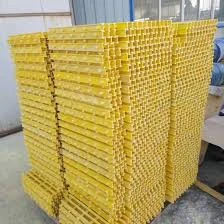
-
 Afrikaans
Afrikaans -
 Albanian
Albanian -
 Amharic
Amharic -
 Arabic
Arabic -
 Armenian
Armenian -
 Azerbaijani
Azerbaijani -
 Basque
Basque -
 Belarusian
Belarusian -
 Bengali
Bengali -
 Bosnian
Bosnian -
 Bulgarian
Bulgarian -
 Catalan
Catalan -
 Cebuano
Cebuano -
 China
China -
 China (Taiwan)
China (Taiwan) -
 Corsican
Corsican -
 Croatian
Croatian -
 Czech
Czech -
 Danish
Danish -
 Dutch
Dutch -
 English
English -
 Esperanto
Esperanto -
 Estonian
Estonian -
 Finnish
Finnish -
 French
French -
 Frisian
Frisian -
 Galician
Galician -
 Georgian
Georgian -
 German
German -
 Greek
Greek -
 Gujarati
Gujarati -
 Haitian Creole
Haitian Creole -
 hausa
hausa -
 hawaiian
hawaiian -
 Hebrew
Hebrew -
 Hindi
Hindi -
 Miao
Miao -
 Hungarian
Hungarian -
 Icelandic
Icelandic -
 igbo
igbo -
 Indonesian
Indonesian -
 irish
irish -
 Italian
Italian -
 Japanese
Japanese -
 Javanese
Javanese -
 Kannada
Kannada -
 kazakh
kazakh -
 Khmer
Khmer -
 Rwandese
Rwandese -
 Korean
Korean -
 Kurdish
Kurdish -
 Kyrgyz
Kyrgyz -
 Lao
Lao -
 Latin
Latin -
 Latvian
Latvian -
 Lithuanian
Lithuanian -
 Luxembourgish
Luxembourgish -
 Macedonian
Macedonian -
 Malgashi
Malgashi -
 Malay
Malay -
 Malayalam
Malayalam -
 Maltese
Maltese -
 Maori
Maori -
 Marathi
Marathi -
 Mongolian
Mongolian -
 Myanmar
Myanmar -
 Nepali
Nepali -
 Norwegian
Norwegian -
 Norwegian
Norwegian -
 Occitan
Occitan -
 Pashto
Pashto -
 Persian
Persian -
 Polish
Polish -
 Portuguese
Portuguese -
 Punjabi
Punjabi -
 Romanian
Romanian -
 Russian
Russian -
 Samoan
Samoan -
 Scottish Gaelic
Scottish Gaelic -
 Serbian
Serbian -
 Sesotho
Sesotho -
 Shona
Shona -
 Sindhi
Sindhi -
 Sinhala
Sinhala -
 Slovak
Slovak -
 Slovenian
Slovenian -
 Somali
Somali -
 Spanish
Spanish -
 Sundanese
Sundanese -
 Swahili
Swahili -
 Swedish
Swedish -
 Tagalog
Tagalog -
 Tajik
Tajik -
 Tamil
Tamil -
 Tatar
Tatar -
 Telugu
Telugu -
 Thai
Thai -
 Turkish
Turkish -
 Turkmen
Turkmen -
 Ukrainian
Ukrainian -
 Urdu
Urdu -
 Uighur
Uighur -
 Uzbek
Uzbek -
 Vietnamese
Vietnamese -
 Welsh
Welsh -
 Bantu
Bantu -
 Yiddish
Yiddish -
 Yoruba
Yoruba -
 Zulu
Zulu
frp tank
Understanding FRP Tanks and Their Applications
Fiber Reinforced Plastic (FRP) tanks have gained immense popularity across various industries due to their unique properties, durability, and versatility. These tanks are made by reinforcing plastic with fibers such as glass, carbon, or aramid, resulting in a composite material that combines the strengths of both its constituents. This article explores the characteristics of FRP tanks, their benefits, applications, and the reasons behind their increasing adoption.
One of the most significant advantages of FRP tanks is their resistance to corrosion. Unlike traditional metal tanks, which can succumb to rust and degradation over time when exposed to harsh chemicals or environmental conditions, FRP tanks maintain their integrity and reliability. This feature makes them particularly attractive for industries dealing with corrosive substances, such as chemicals, water treatment, and food processing. Additionally, the lightweight nature of FRP materials allows for easier handling and installation, reducing transportation costs and labor requirements.
Understanding FRP Tanks and Their Applications
In terms of customization, FRP tanks can be tailored to meet a variety of specifications. They can be manufactured in different shapes, sizes, and capacities to fit specific needs, from small storage units to large industrial tanks. This flexibility ensures that businesses can find solutions that perfectly align with their operational requirements.
frp tank

Furthermore, the longevity of FRP tanks is another appealing aspect. With proper maintenance, they can last for decades without requiring replacement, which contributes to a lower total cost of ownership over time. Their structural resilience also means they are capable of withstanding extreme weather conditions, making them suitable for outdoor installations.
The applications of FRP tanks are diverse. In the water and wastewater treatment sector, they are used for storing chemicals, which are essential for treating and purifying water. FRP tanks are also widely used in the agricultural sector for storing fertilizers and pesticides, where their resistance to corrosion is particularly beneficial. Additionally, the oil and gas industry utilizes FRP tanks for various applications, including the storage of chemicals and as separators.
As industries continue to prioritize safety and environmental issues, the adoption of FRP tanks is expected to grow. Their ability to minimize leakage and emissions aligns with the increasing demand for sustainable practices. By choosing FRP tanks, businesses not only enhance their operational efficiency but also contribute to a more sustainable future.
In conclusion, FRP tanks represent a modern solution to the storage needs of various industries. Their resistance to corrosion, lightweight nature, thermal insulation, customizability, and longevity make them an excellent choice for companies looking to enhance their operational capacity while maintaining safety and compliance standards. As technology advances, the applications and benefits of FRP tanks will likely continue to expand, solidifying their position as a preferred option in the market.
Latest news
-
Exploring the Benefits of Top Hammer Drifter Rods for Enhanced Drilling PerformanceNewsJun.10,2025
-
High-Precision Fiberglass Winding Machine for GRP/FRP Pipe Production – Reliable & Efficient SolutionsNewsJun.10,2025
-
FRP Pipes & Fittings for Shipbuilding - Corrosion-Resistant & LightweightNewsJun.09,2025
-
Premium FRP Flooring Solutions Durable & Slip-ResistantNewsJun.09,2025
-
Premium Fiberglass Rectangular Tanks Durable & Lightweight SolutionNewsJun.09,2025
-
Tapered Drill String Design Guide Durable Performance & UsesNewsJun.09,2025









